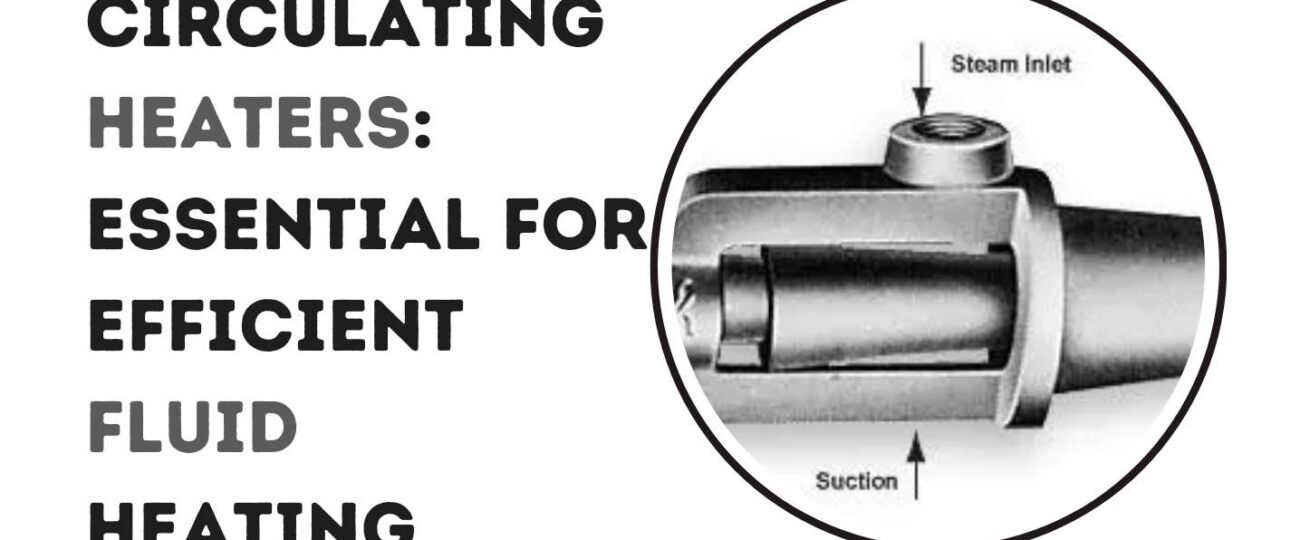In various industrial processes, maintaining precise temperature control of fluids is crucial for efficiency and safety. Circulating heaters are a key component in achieving this, offering reliable and consistent heating for a wide range of applications. This article explores what circulating heaters are, how they work, and why they are indispensable in industrial settings.
What is a Circulating Heater?
A circulating heater is a type of electric heater designed to heat fluids as they pass through a closed-loop system. These heaters are typically installed inline with piping systems, where they heat the fluid to a specified temperature before it is circulated back into the process. Circulating heaters are widely used in industries where precise temperature control is required, such as in oil and gas, chemical processing, and food and beverage production.
How Do Circulating Heaters Work?
Circulating heaters operate by heating a fluid as it flows through the heater’s chamber. The process can be broken down into the following steps:
1. Fluid Entry
The fluid enters the circulating heater through an inlet. The heater is typically positioned inline within a piping system, allowing for continuous flow.
2. Heating Element
Inside the heater, an electric heating element generates heat. The fluid passes over or around this element, absorbing the heat as it moves through the heater.
3. Temperature Control
Circulating heaters are often equipped with thermostats or temperature sensors that regulate the heating element’s output. This ensures that the fluid reaches the desired temperature before exiting the heater.
4. Fluid Exit
Once heated, the fluid exits the circulating heater and continues through the piping system to the next stage of the process. The heater can maintain a continuous flow, ensuring consistent temperature control throughout the system.
Applications of Circulating Heaters
Circulating heaters are versatile devices used in a wide array of industrial applications. Here are some of the most common uses:
Oil and Gas Industry
In the oil and gas sector, circulating heaters are used to maintain the temperature of various fluids, such as crude oil, natural gas, and lubricants. This is crucial for preventing the solidification of materials, reducing viscosity, and ensuring smooth flow through pipelines.
Chemical Processing
Chemical plants utilize circulating heaters to maintain the temperature of reactive fluids, ensuring consistent chemical reactions and preventing the crystallization or degradation of sensitive materials.
Food and Beverage Production
In the food and beverage industry, circulating heaters are used to maintain the temperature of liquids such as syrups, oils, and other ingredients. This is important for processes like pasteurization, where precise temperature control is essential for product safety and quality.
Water Heating Systems
Circulating heaters are also used in water heating applications, including boiler systems, water circulation in HVAC systems, and hot water supply for industrial processes. They provide efficient and consistent heating, ensuring that water temperatures remain within desired ranges.
Advantages of Circulating Heaters
Circulating heaters offer several benefits that make them a preferred choice for fluid heating in industrial applications:
- Precise Temperature Control: Circulating heaters are designed to provide accurate and consistent temperature control, which is critical for many industrial processes.
- Energy Efficiency: These heaters are highly efficient, with minimal heat loss, ensuring that energy is used effectively to maintain fluid temperatures.
- Compact and Space-Saving: Circulating heaters are compact and can be installed inline with existing piping systems, making them a space-saving solution.
- Versatility: They can handle a wide range of fluids, including corrosive and viscous materials, and can operate across various temperature ranges.
- Durability and Longevity: Built to withstand harsh industrial environments, circulating heaters are durable and have a long operational life, reducing the need for frequent replacements.
Recent Innovations in Circulating Heater Technology
Technological advancements have led to significant improvements in circulating heater design and functionality:
- Advanced Materials: The use of advanced materials, such as corrosion-resistant alloys and high-temperature ceramics, has improved the durability and efficiency of circulating heaters.
- Smart Controls: Modern circulating heaters are equipped with smart control systems that allow for precise temperature regulation and real-time monitoring, enhancing operational efficiency.
- Improved Heat Transfer: Innovations in heating element design and fluid dynamics have led to better heat transfer rates, reducing energy consumption and improving overall performance.
- Modular Designs: New modular designs allow for easier integration into existing systems and simplified maintenance, making circulating heaters more adaptable to various industrial setups.
Conclusion
Circulating heaters are essential for efficient and reliable fluid heating in a wide range of industrial applications. Their ability to provide precise temperature control, coupled with their energy efficiency and durability, makes them a vital component in processes where temperature stability is crucial. As technology continues to evolve, circulating heaters will only become more efficient and adaptable, further cementing their role in industrial operations.
Consider the benefits of circulating heaters for your industrial processes and explore the latest innovations to optimize your fluid heating systems.
See Also: Tech Advancements in Heating Technology: Custom Flexible Heaters Unveiled










